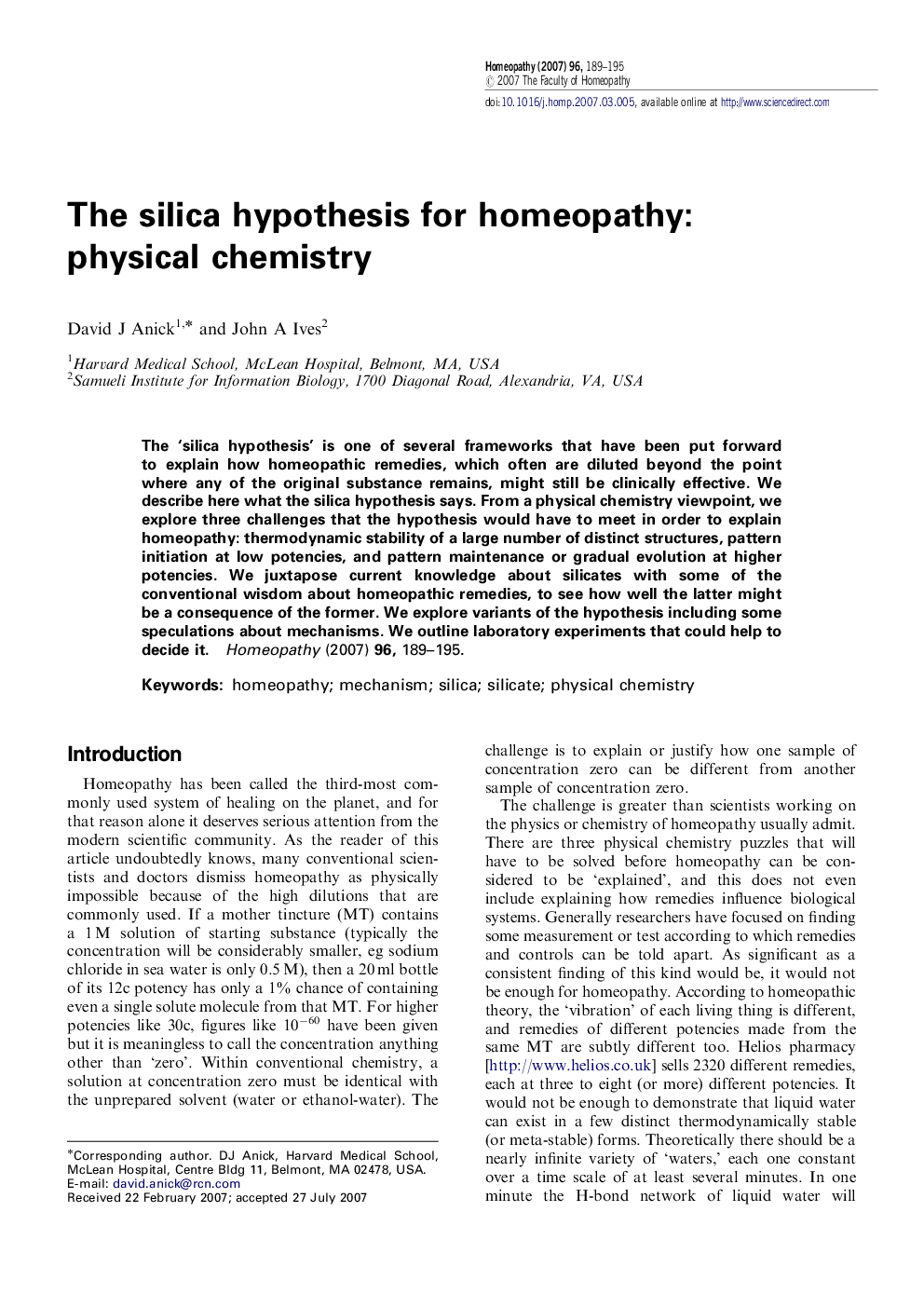| Article ID | Journal | Published Year | Pages | File Type |
|---|---|---|---|---|
| 2630215 | Homeopathy | 2007 | 7 Pages |
The ‘silica hypothesis’ is one of several frameworks that have been put forward to explain how homeopathic remedies, which often are diluted beyond the point where any of the original substance remains, might still be clinically effective. We describe here what the silica hypothesis says. From a physical chemistry viewpoint, we explore three challenges that the hypothesis would have to meet in order to explain homeopathy: thermodynamic stability of a large number of distinct structures, pattern initiation at low potencies, and pattern maintenance or gradual evolution at higher potencies. We juxtapose current knowledge about silicates with some of the conventional wisdom about homeopathic remedies, to see how well the latter might be a consequence of the former. We explore variants of the hypothesis including some speculations about mechanisms. We outline laboratory experiments that could help to decide it.
